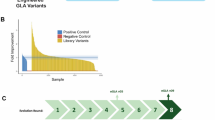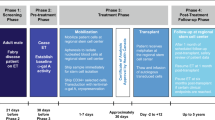Abstract
We compared two recombinant α-galactosidases developed for enzyme replacement therapy for Fabry disease, agalsidase alfa and agalsidase beta, as to specific α-galactosidase activity, stability in plasma, mannose 6-phosphate (M6P) residue content, and effects on cultured human Fabry fibroblasts and Fabry mice. The specific enzyme activities of agalsidase alfa and agalsidase beta were 1.70 and 3.24 mmol h−1 mg protein−1, respectively, and there was no difference in stability in plasma between them. The M6P content of agalsidase beta (3.6 mol/mol protein) was higher than that of agalsidase alfa (1.3 mol/mol protein). The administration of both enzymes resulted in marked increases in α-galactosidase activity in cultured human Fabry fibroblasts, and Fabry mouse kidneys, heart, spleen and liver. However, the increase in enzyme activity in cultured fibroblasts, kidneys, heart and spleen was higher when agalsidase beta was used. An immunocytochemical analysis revealed that the incorporated recombinant enzyme degraded the globotriaosyl ceramide accumulated in cultured Fabry fibroblasts in a dose-dependent manner, with the effect being maintained for at least 7 days. Repeated administration of agalsidase beta apparently decreased the number of accumulated lamellar inclusion bodies in renal tubular cells of Fabry mice.
Similar content being viewed by others
Log in or create a free account to read this content
Gain free access to this article, as well as selected content from this journal and more on nature.com
or
References
Desnick RJ, Ioannou YA, Eng CM (2001) α-Galactosidase A deficiency: Fabry disease. In: Scriver CR, Beaudet AL, Sly WS, Valle D (eds) The metabolic and molecular bases of inherited disease, 8th edn. McGraw-Hill, New York, pp 3733–3774
Desnick RJ, Brady RO, Barranger J, Collins AJ, Germain DP, Goldman M, Grabowski G, Packman S, Wilcox WR (2003) Fabry disease, an under-recognized multisystemic disorder: expert recommendations for diagnosis, management, and enzyme replacement therapy. Ann Int Med 138:338–346
Eng CM, Banikazemi M, Gordon RE, Goldman M, Phelps R, Kim L, Gass A, Winston J, Dikman S, Fallon JT, Brodie S, Stacy CB, Mehta D, Parsons R, Norton K, O’Callaghan M, Desnick RJ (2001a) A phase 1/2 clinical trial of enzyme replacement in Fabry disease: pharmacokinetic, substrate clearance, and safety studies. Am J Hum Genet 68:711–722
Eng CM, Guffon N, Wilcox WR, Germain DP, Lee P, Waldek S, Caplan L, Linthorst GE, Desnick RJ (2001b) Safety and efficacy of recombinant human α-galactosidase A replacement therapy in Fabry’s disease. N Engl J Med 345:9–16
Ioannou YA, Zeidner KM, Gordon RE, Desnick RJ (2001) Fabry disease: preclinical studies demonstrate the effectiveness of α-galactosidase A replacement in enzyme-deficient mice. Am J Hum Genet 68:14–25
Ishii S, Kase R, Sakuraba H, Fujita S, Sugimoto M, Tomita K, Semba T, Suzuki Y (1994) Human α-galactosidase gene expression: significance of two peptide regions encoded by exons 1–2 and 6. Biochim Biophys Acta 1204:265–270
Kornfeld S, Sly WS (2001) I-cell disease and pseudo-Hurler polydystrophy: disorders of lysosomal enzyme phosphorylation and localization. In: Scriver CR, Beaudet AL, Sly WS, Valle D (eds) The metabolic and molecular bases of inherited disease, 8th edn. McGraw-Hill, New York, pp 3469–3482
Kotani M, Kawashima I, Ozawa H, Ogura K, Ariga T, Tai T (1994) Generation of one set of murine monoclonal antibodies specific for globo-series glycolipids: evidence for differential distribution of the glycolipids in rat small intestine. Arch Biochem Biophys 310:89–96
Lee K, Jin X, Zhang K, Copertino L, Andrews L, Baker-Malcolm J, Geagan L, Qiu H, Seiger K, Barngrover D, McPherson JM, Edmunds T (2003) A biochemical and pharmacological comparison of enzyme replacement therapies for the glycolipid storage disorder Fabry disease. Glycobiology 13:305–313
Mayes JS, Scheerer JB, Sifers RN, Donaldson ML (1981) Differential assay for lysosomal α-galactosidase in human tissues and its application to Fabry’s disease. Clin Chim Acta 112:247–251
Mehta A, Ricci R, Widmer U, Dehout F, Garcia de Lorenzo A, Kampmann C, Linhart A, Sunder-Plassmann G, Ries M, Beck M (2004) Fabry disease defined: baseline clinical manifestations of 366 patients in the Fabry Outcome Survey. Eur J Clin Invest 34:236–242
Nakao S, Takenaka T, Maeda M, Kodama C, Tanaka A, Tahara M, Yoshida A, Kuriyama M, Hayashibe H, Sakuraba H, Tanaka H (1995) An atypical variant of Fabry’s disease in men with left ventricular hypertrophy. N Engl J Med 333:288–293
Ohshima T, Murray GJ, Swaim WD, Longenecker G, Quirk JM, Cardarelli CO, Sugimoto Y, Pastan I, Gottesman MM, Brady RO, Kulkarni AB (1997) α-Galactosidase A deficient mice: a model of Fabry disease. Proc Natl Acad Sci USA 94:2540–2544
Ohshima T, Schiffmann R, Murray GJ, Kopp J, Quirk JM, Stahl S, Chan C-C, Zerfas P, Tao-Cheng J-H, Ward JM, Brady RO, Kalkarni AB (1999) Aging accentuates and bone marrow transplantation ameliorates metabolic defects in Fabry disease mice. Proc Natl Acad Sci USA 96:6423–6427
Rosenfeld EL, Belenky DM, Bystrov NK (1986) Interaction of hepatic asialoglycoprotein receptor with asialoorosomucoid and galactolyzed lysosomal α-glucosidase. Biochim Biophys Acta 883:306–312
Schiffmann R, Murray GJ, Treco D, Daniel P, Sellos-Moura M, Myers M, Quirk JM, Zirzow GC, Borowski M, Loveday K, Anderson T, Gillespie F, Cliver KL, Jeffries NO, Doo E, Liang TJ, Kreps C, Gunter K, Frei K, Crutchfield K, Selden RF, Brady RO (2000) Infusion of α-galactosidase A reduces tissue globotriaosylceramide storage in patients with Fabry disease. Proc Natl Acad Sci USA 97:365–370
Takashiba M, Chiba Y, Arai E, Jigami Y (2004) Analysis of mannose-6-phosphate labeled with 8-aminopyrene-1,3,6-trisulfonate by capillary electrophoresis. Anal Biochem 332:196–198
Thurnberg BL, Rennke H, Colvin RB, Dikman S, Gordon RE, Collins AB Desnick RJ, O’Callaghan M (2002) Globotriaosylceramide accumulation in the Fabry kidney is cleared from multiple cell types after enzyme replacement therapy. Kidney Int 62:1933–1946
Acknowledgements
We wish to thank Dr. Ashok B. Kulkarni (Gene Targeting Facility and Functional Genomics Unit, NIDCR, NIH) for providing us with the Fabry mice, and also thank Sumitomo Pharmaceuticals for providing us with the agalsidase alfa sample. This work was partly supported by grants from the Tokyo Metropolitan Government, the Japan Society for the Promotion of Science, the Ministry of Education, Science, Sports and Culture, and the Ministry of Health, Labor and Welfare of Japan.
Author information
Authors and Affiliations
Corresponding author
Rights and permissions
About this article
Cite this article
Sakuraba, H., Murata-Ohsawa, M., Kawashima, I. et al. Comparison of the effects of agalsidase alfa and agalsidase beta on cultured human Fabry fibroblasts and Fabry mice. J Hum Genet 51, 180–188 (2006). https://doi.org/10.1007/s10038-005-0342-9
Received:
Accepted:
Published:
Issue date:
DOI: https://doi.org/10.1007/s10038-005-0342-9
Keywords
This article is cited by
-
The glycosylation design space for recombinant lysosomal replacement enzymes produced in CHO cells
Nature Communications (2019)
-
Fabry Disease: Recognition, Diagnosis, and Treatment of Neurological Features
Current Treatment Options in Neurology (2016)
-
Fabry’s disease: an example of cardiorenal syndrome type 5
Heart Failure Reviews (2015)
-
Enzymes Approved for Human Therapy: Indications, Mechanisms and Adverse Effects
BioDrugs (2015)
-
Agalsidase Alfa
BioDrugs (2012)



